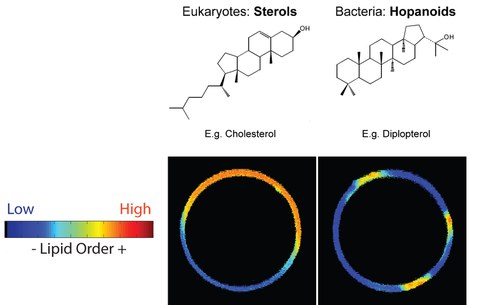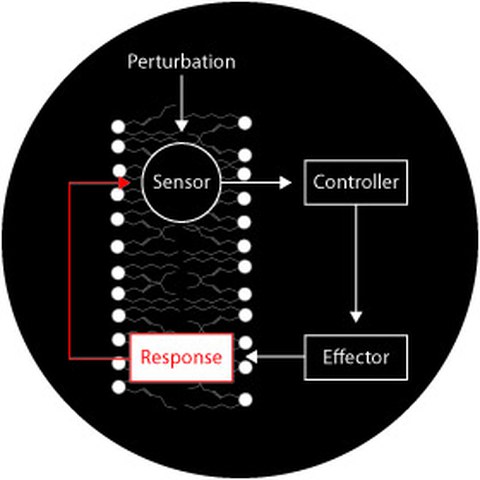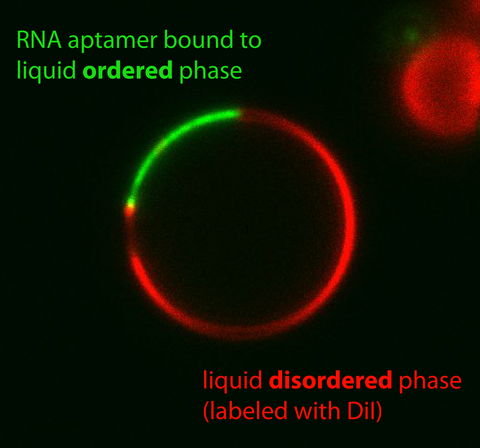Forschung
Membrane Lipid Ordering
To support life, the cell membrane must balance the competing demands of biochemical fluidity versus mechanical robustness and permeability.
Eukaryotic organisms solve the problem of balancing membrane robustness and fluidity through the lipid ordering effect of sterols, such as cholesterol. The unique geometry of sterols supports membranes that are mechanically robust enough to withstand environmental perturbations, but also fluid enough to support life. However, sterols as the sole ordering component presents a conundrum since many organisms (e.g. bacteria) cannot synthesize sterols. Furthermore, sterol biosynthesis requires molecular oxygen, whereas life was present on earth at least a billion years before cyanobacteria first started oxidizing the atmosphere. So, what did membranes use before sterols, and how do organisms without sterols solve this problem?
We shed some light on this dilemma with the demonstration that ancient bacterial lipids known as hopanoids are sterol analogues that can order membrane lipids and support the formation of liquid-ordered membrane domains (Saenz et al., 2012, Saenz et al., 2015) This observation transformed our understanding of membrane evolution, suggesting that the ability to subcompartmentalize membranes preceded the evolution of sterols. Moreover, it suggests that liquid-ordered membrane domains may be common among prokaryotes and decouples the evolution of this trait from the requirement for molecular oxygen, since hopanoid biosynthesis is anaerobic.
Now we are working to understand how lipid ordering affects membrane organization and function using bacterial model organisms. In particular we will elucidate the role of bacterial sterol analogues in tuning membrane protein function and dynamics, and the link between lipid ordering and mechanisms of antibiotic resistance.
Membrane Sense and Response
We want to elucidate the minimal set of features of a membrane that are required to support life. This work will begin by trying to elucidate the simplest means to construct a responsive synthetic membrane capable of adjusting its composition to maintain robustness in response to environmental changes (e.g. temperature and pH). The design of such a minimal membrane will be inspired from the architecture of Mycoplasma, some of the simplest free living organisms.
RNA-Membrane Interactions
We are exploring how RNA-lipid interactions could have contributed to the emergence of cellular life and how these interactions can be applied to design novel responsive synthetic membrane systems



